Studies on the Prophets (16 vols.)
Digital Logos Edition
Overview
This scholastic collection is essential for any study of the Old Testament prophets, presenting comprehensive studies on a variety of subjects within this broad category. An understanding of prophets, prophecy, and the context in which they appear in the Bible is critical to comprehension of the New Testament and all of Scripture. Using an analytical lens, Studies on the Prophets (16 vols.) contains compilations of essays, as well as whole volumes, providing a wide range of topics and authors in the field. There are many academic approaches used throughout, including historical, literary, contextual, cultural, linguistic, as well as gender and identity methods. Some of the topics covered include language and narrative style, characterization of God, roles of the prophets, purposes of the texts, cultural influences of surrounding nations, and viewing the texts through literary and dramatic analysis.
Studies on the Prophets (16 vols.) will be useful to students, professors, and those interested in a larger understanding of the role of the prophets. There are helpful cross-references, notes, bibliographies, indexes, and table of contents to guide research and study.

- In-depth analysis of Old Testament prophets and prophecies
- Features works of prominent Old Testament scholars
- Each volume contains extensive notes, bibliography, and indexes
- Title: Studies on the Prophets (16 vols.)
- Volumes: 16
- Pages: 4,663
This title is included in the following collections
You can save when you purchase this product as part of a collection.
Logos 8 Messianic Jewish Diamo...
$2,999.99$2,999.99Logos 9 Messianic Jewish Diamo...
$2,999.99$2,999.99Library of Hebrew Bible/Old Te...
$4,999.99$3,749.99Verbum 8 Portfolio Legacy Libr...
$4,749.99$4,749.99
- $4,749.99
- $7,749.99
- $21,749.99
- $23,999.99
- $24,999.99
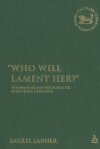
This volume focuses on the book of Nahum, examining not only the issues and context but also the narrative voice and how it differs from the other prophet books in the Old Testament. Lanner studies the book as a whole, looking at the setting, cultural issues, and purpose of the text. In the latter half of the book, she presents her findings on identity and gender. "Who Will Lament Her?" The Feminine and the Fantastic in the Book of Nahum is an important study on this particular minor prophet.
Laurel Lanner teaches theology at the University of Botswana.
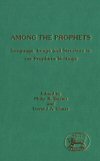
Prophetic symbolism is one of the key topics of this volume. On Isaiah, John F.A. Sawyer finds radical images of Yahweh, Kenneth T. Aitken looks at the metamorphosis of the key motif of hearing, seeing and understanding, Michael L. Barre examines lions and birds in 31:4—5, and Marvin A. Sweeney re-examines vmes(tm)s in 8:6. The imagery of Ezekiel is explored by Leslie C. Allen (the "Death Valley" vision) and M. G. Swanepoel (Ezekiel 16 and female images of Israel), and Alan Cooper and Athalya Brenner write on the book of Jonah. Two essays of more general scope deal with the search for unity in Isaiah (David Carr) and the redactional shape of Nahum 1 (James Nogalski). An attractive and stimulating volume which reflects the liveliness of current research on the prophetic literature.
Essays Included:
- "Hearing and Seeing: Metamorphoses of a Motif in Isaiah 1-39, " K.T. Aitken
- "On unfsos in Isaiah 8:6, " Marvin A. Sweeney
- "Of Lions and Birds: A Note on Isaiah 31:4-5," Michael L. Barré
- "The Construction of the Subject and the Symbolic Order: A Reading of the Last Three Suffering Servant Songs," Francis Landy
- "Radical Images of Yahweh in Isaiah 63," John F.A. Sawyer
- "Ezekiel 27 and the Cosmic Ship," John B. Geyer
- "Structure, Tradition and Redaction in Ezekiel's Death Valley Vision," Leslie C. Allen
- "In Praise of Divine Caprice: The Significance of the Book of Jonah," Alan Cooper
- "Jonah: A Battle of Shifting Alliances," Timothy L. Wilt
- "Jonah's Poem out of and within its Context," Athalya Brenner
- " “The Redactional Shaping of Nahum 1 for the Book of the Twelve," James Nogalski
Philip R. Davies is Professor of Biblical Studies in the University of Sheffield, UK.
David Clines is Professor of Biblical Studies and Head of Department in the University of Sheffield.
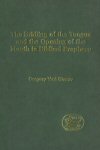
Glazov demonstrates that the interlinked themes of bridling the tongue and opening the mouth, well-known components of wisdom teaching, are also crucial to understanding much in the prophets, as well as later Jewish and Christian writings, especially liturgical texts. His comprehensive survey and analysis of the theme contribute to both a literary and a historical perspective on the prophetic literature of the Bible.
Gregory Glazov is Tutor in Theology at Plater College, Oxford; Tutor in Old Testament Studies at St. Benet's Hall and Blackfriars, Oxford, and Hebrew Lecturer at Exeter College, Oxford.
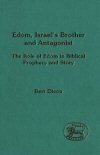
The subject of the present book is the theme of Edom in the Old Testament. In the four long oracles against Edom (Isa. 34, Jer. 49:7—22, Ezek. 35, Obadiah), this nation serves as Israel's antagonist and the representative of the enemy nations. Edom also appears in the book of Genesis: Jacob's brother Esau is the patriarch of the Edomites and Esau himself is called Edom as well (Gen. 25—36). Although there is no such negative estimation of Edom as in the prophecies, here too Edom represents the nations, and serves as Israel's opponent. This study discusses the origin and development of Edom's exceptional role. It extensively analyses the connections between Obadiah (the only one of the four major oracles in which, like in Genesis, Edom is called Israel's brother), the other oracles, and Genesis. It sketches the literary history of these texts and discusses the possible historical background of the conceptions they share. Can the similarities in Edom's role be explained by assuming the same historical background for the two sets of texts? If so, why do the major oracles against Edom present an extremely negative, and the Jacob-Esau stories a relatively positive picture of Edom?
Bert Dicou is a scholar of the Old Testament in the Netherlands.
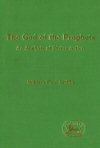
"Content analysis"—which is a computer-assisted form of textual analysis-is used to examine divine activity in six prophetic texts, comparing God's activity to that of humans. In this methodologically innovative study, the author concludes, in the light of quantitative data, that God is harsher to non-Israelites than to Israelites in all the texts, and much kinder to Israelites in Joel than in the typical prophet. God and humans are involved in much the same kinds of physical and mental processes, but to considerably different degrees. Griffin argues persuasively that the God of the prophets is not the "wholly other" of some theologies, but neither do his actions follow exactly the human pattern.
William Paul Griffin is professor of Old Testament and Hebrew at Evangel University in Springfield, Missouri. He received his BA in biblical studies from Evangel University in 1985, his MDiv from Harvard University in 1988, and his PhD from Emory University in 1995. He is a member of the Society of Biblical Literature.

Inspired Speech was originally published as a Festschrift to honor the work of Professor Herbert B. Huffmon, Professor of Old Testament/Hebrew Bible at Drew University. Thirty-three of his colleagues and students contributed to the work, which explores various aspects of prophecy in ancient Israel and its neighboring cultures. The result is a volume which provides an excellent overview of the current state and future directions of scholarship on prophecy in the biblical world.
Essays Included:
- “Introduction to the Study of the History of the Religion of Israel,” Frank Moore Cross
- “On unfsos in Isaiah 8:6,” Marvin A. Sweeney
- “The Amorite Heritage in the West,” George E. Mendenhall
- “What is Prophecy? An Ancient Near Eastern Perspective,” Martti Nissinen
- “Current Issues in the Study of Old Testament Prophecy,” Robert R. Wilson
- “The Lamenting Prophet and the Modern Self: On the Origins of Contemporary Readings of Jeremiah,” Mary Chilton Callaway
- “ Metaphor and Social Reality: Isaiah 23:17—18, Ezekiel 16:35—37 and Hosea 2:4—5,” Peggy L. Day
- “ Southern Mesopotamian Titles for Temple Personnel in the Mari Archives,” Daniel E. Fleming
- “False Prophecy is True,” David Noel Freedman; Rebecca Frey
- “Esarhaddon, Sanduarri, and the Adon Papyrus,” Alberto R. Green
- “Jeremiah as an Inspiration to the Poet of Job,” Edward L. Greenstein
- “When the God of Israel 'Acts-Out' His Anger: On the Language of Divine Rejection in Biblical Literature,” Baruch A. Levine
- “Recovering an Ancient Paronomasia in Zechariah 14:5,” David Marcus
- “The Once and Future Lament: Micah 2:1—5 and the Prophetic Persona,” Harry P. Nasuti
- “The Context, Text, and Logic of Isaiah 7:7—9,” Martti Nissinen
- “Current Issues in the Study of Old Testament Prophecy,” J.J. M. Roberts
- “The Eyes of Eli: An Essay in Motif Accretion,” Jack M. Sasson
- From the Mouth of the Prophet: The Literary Fixation of Jeremiah's Prophecies in the Context of the Ancient Near East,” Karel Van Der Toorn
- “The Metaphors of 'Canaanite' and 'Baal' in Hosea,” Lyn M. Bechtel
- “What's in a Name? Cyrus and the Dating of Deutero-Isaiah,” Milton Eng
- “What Did Elijah Do to His Mantle? The Hebrew Root GLM,” John Kaltner
- “Word Event in Jeremiah: A Look at the Composition's 'Introductory Formulas'',” John I. Lawlor
- “Visions of Peace in Isaiah,” David A. Leiter
- “'Yahweh Has Given these Three Kings into the Hand of Moab': A Socio-Literary Reading of 2 Kings 3,” Jesse C. Long, Jr, and Mark Sneed
- “The Spiritual Journey of Jonah: From the Perspective of C.G. Jung's Analytical Psychology,” Jongsoo Park
- “Harder than Flint, Faster than Eagles: Intensified Comparatives in the Latter Prophets,” Eric A Seibert
- “Jeremiah as a Polyphonic Response to Suffering,” Louis Stulman
- “The Royal Family in the Jeremiah Tradition,” Alex Varughese
- “New Light on the Story of Achsah,” William W. Hallo
- “Bathsheba's Silence (1 Kings 1:11—31),” Michael S. Moore
- “A Quest for the Divine and.. .the Tourist Dollar: The Dilemma Faced by Contemporary Dervish Orderss'',” Mary-Louise Mussell
- “Dissonant Pieties: John Calvin and the Prayer Psalms of the Psalter,” Paul A. Riemann
John Kaltner is Associate Professor of Religious Studies at Rhodes College, Memphis, TN.
Louis Stulman is Professor of Religious Studies, University of Findlay.
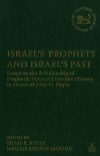
This book offers a new and fruitful approach to a major area of Old Testament study. Expressing dissatisfaction with current critical theories of Israelite prophecy, which have regularly depended on the categories of office and charisma to designate essential features, Petersen looks instead to modern "role theory" for a conceptual apparatus which can take account not only of what prophets regularly did in common but also of the significant variety apparent in Israelite prophetic performance.
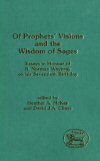
Old Testament prophecy and wisdom are two of the main themes with which Norman Whybray, formerly of the University of Hull, has concerned himself in his highly productive and innovative scholarly career. In honor of his seventieth birthday, a distinguished international group of scholars have expressed their personal and professional admiration for him with essays that are particularly rich and significant. The roll-call of contributors reads: Brenner, Brueggemann, Cazelles, Clements, Clines, Coggins, Crenshaw, Eaton, Gelston, Gordon, Goulder, Grabbe, Jeppersen, Knibb, Mayes, Mettinger, Soggin, and Williamson.
Essays Include:
- “Prophets, Priests, Diviners and Sages in Ancient Israel,” Lester L. Grabbe
- “From Mari to Moses: Prophecy at Mari and in Ancient Israel,” Robert P. Gordon
- “Prophecy—True and False,” Richard J. Coggins
- “First and Last in Isaiah,” Hugh G.M. Williamson
- “Mother Zion, Father Servant: A Reading of Isaiah 49—55,” Knud Jeppesen
- “Knowledge, Humiliation or Suffering: A Lexical, Textual and Exegetical Problem in Isaiah 53,” Anthony Gelston
- “Metacommentating Amos,” David J.A. Clines
- “Wisdom Literature: Retrospect and Prospect,” James L. Crenshaw
- “Memory and Encounter: An Educational Ideal,” John Eaton
- “Some Observations on the Figurations of Woman in Wisdom Literature,” Athalya Brenner
- “The Good Neighbour in the Book of Proverbs,” Ronald E. Clements
- “Psalm 37: Conflict of Interpretation,” Walter Brueggemann
- “Intertextuality: Allusion and Vertical Context Systems in Some Job Passages,” Tryggve N.D. Mettinger
- “Judah and Tamar (Genesis 38),” J. Alberto Soggin
- “Les milieux du Deuteronome,” Henri Cazelles
- “Ruth: A Homily on Deuteronomy 22-25?,” Michael D. Goulder
Heather McKay is Senior Lecturer in Religious Studies at Edge Hill College, Ormskirk, Lancashire.
David Clines is Professor of Biblical Studies and Head of Department in the University of Sheffield.
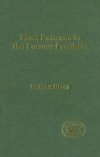
The "pivot pattern" is a unique type of chiasmus, a linguistic pattern characterized by an inversion of the internal order of a phrase or passage. The main idea is found primarily at its pivot, while its elements, normally of an uneven number, are distributed on both sides of the pivot in a mirrored symmetry. Klaus undertakes here to compile a "grammar" of the pattern, and to characterize, exemplify and differentiate its various forms.
Dr Nathan Klaus obtained his doctorate from the Hebrew University of Jerusalem, and is Principal of Hasharon Junior High School in Ra'anana, Israel.
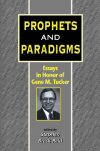
This collection of essays is written by biblical scholars from around the world who are friends and students of the distinguished American biblical scholar Gene M. Tucker, who was President of the Society of Biblical Literature in 1996. His scholarly interest has been wide-ranging, from a passion to understand the biblical prophets to enduring probing of the theology that gave rise to the Hebrew Bible, and this book embodies these wide-ranging interests. Each essay probes the issues of prophetic studies and the theology of the Hebrew Bible. The essays include an examination of the role of W.F. Albright as a prophetic figure in the history of biblical studies and an examination of the superscriptions in the book of the Twelve.
Essays Include:
- “A 'Characteristic' Reflection on What Comes Next (Jeremiah 32:16—44),” Walter Brueggenmann
- “The Son of Tabeel (Isaiah 7:6),” J. Andrew Dearman
- “The Audiences of Prophetic Scrolls: Some Suggestions,” Philip R. Davies
- “Prophetic Books and the Problem of Historical Reconstruction,” Roy F. Melugin
- “Hosea as a Canonical Problem: With Attention to the Song of Songs,” Martin J. Buss
- “Elijah and Elisha in the Context of Israelite Religion,” Thomas W. Overholt
- “The Social Location of the Prophet Amos in Light of the Group/Grid Cultural Anthropological Model,” Guillermo Ramírez
- “Studying Prophetic Texts against their Original Backgrounds: Pre-Ordained Scripts and Alternative Horizons of Research,” Ehud Ben Zvi
- “Ideology and Ideologies in Israelite Prophecy,” Norman K. Gottwald
- “W.F. Albright as Prophet-Reformer: A Theological Paradigm Inscribed in Scholarly Practice,” Burke O. Long
- “Ritualizing, Rite and Pentateuchal Theology,” Frank H. Gorman, Jr.
- “A Matter of Life and Death: A Comparison of Proverbs 1—9 and Job,” Suzanne Boorer
- “Geography and Theology in the Biblical Narrative: The Question of Genesis 2—12,” Yehoshua Gitay
- “Psalm 50: Prophetic Speech and God's Performative Utterances,” Stephen Breck Reid
Stephen Reid is Associate Professor of Old Testament at Austin Presbyterian Theological Seminary, Austin, Texas.
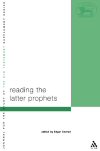
Edgar W. Conrad focuses on the prophetic books as composite collections and shows that:
- Prophets are characters in the text, depicted as figures of the past whose words are significant for a later time
- Reading and writing play a central role in the depiction of prophets
- Prophetic books are presented as written words available to later generations through reading
- That read as a whole, the latter prophets depict the end of prophecy and the emergence of messengers of the Lord
Reading the Latter Prophets is an important contribution to the problems of both the formation and function of the prophetic literature.
Edgar W. Conrad is Director of Postgraduate Studies in the School of History, Philosophy, Religion and Classics at the University of Queensland.
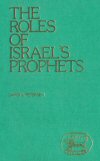
This book offers a new and fruitful approach to a major area of Old Testament study. Expressing dissatisfaction with current critical theories of Israelite prophecy, which have regularly depended on the categories of office and charisma to designate essential features, Petersen looks instead to modern role theory for a conceptual apparatus which can take account not only of what prophets regularly did in common but also of the significant variety apparent in Israelite prophetic performance.
Helpful indexes and table of contents are included.
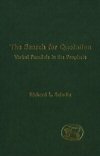
A thorough study of quotation within ancient and modern literature is the background for this new approach to alleged quotations within the prophetic writings. The common claim that specific verbal parallels result from the conscious repetition of the words of a predecessor is beset by difficulties. After examining quotation in non-prophetic (ancient Near Eastern, early Jewish, Old Testament wisdom and narrative, and modern Western) literatures, Schultz proposes a new model for interpreting verbal parallels that utilizes several criteria for identifying quotation and combines diachronic with synchronic analysis. He then applies this model to five representative verbal parallels involving the book of Isaiah. This book illustrates how an awareness of the versatility of quotation facilitates a more accurate interpretation of verbal parallels, and at the same time calls for greater caution in employing them in support of various theories.
Richard L. Schultz is the Armerding Chair of Biblical Studies and Professor of Old Testament at Wheaton College, Wheaton, Illinois.
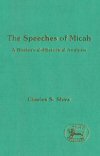
In this important book, Shaw deploys a rigorous and systematic rhetorical analysis in the service of a reconstruction of the historical setting of each of the discourses in Micah. Unlike Muilenburg's "rhetorical criticism", this approach focuses on the persuasiveness of the discourses, the means by which the author achieves his goal. Among Shaw's tools is the concept of the rhetorical situation. It involves not only the question of the identity of the narratees, but also objective factors like events, conditions and attitudes to which the discourse responds and subjective factors like the speaker's own view of the situation. For each discourse the author analyses its goals and strategy, determining the structure of the speeches, the function of each part in the persuasiveness of the speech, the kinds of proof and the style utilized in order to achieve the author's goals.
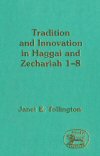
The prophets Haggai and Zechariah, near contemporaries, were active at a critical period in Israel's history. The recently restored Jerusalem community had come through national downfall and exile. Its religious and sociopolitical identity in the Persian Empire had to be established. This volume offers a thematic study of the prophetic response to that situation. The prophets, their status and their styles of prophecy are compared with those of their predecessors, as are their attitudes towards Israel's religious traditions. Their theological understanding of proper leadership, divine judgment, and Israel's relationship to other nations is compared with the developing theology of the classical prophets. The purpose is to discover whether Haggai, Zechariah and their traditions demonstrate continuity with, or divergence from, the prophetic traditions in which they stood. This study concludes that Haggai is a traditionalist, while Zechariah emerges as an innovative and radical theologian ahead of his time.
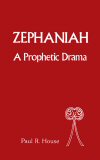
This is an excellent overview to the book of Zephaniah. House includes an introduction of genre criticism and genre theory and then applies them both to the text of Zephaniah. He examines the structure, plot, point of view, and characterization of this Old Testament book. House concludes by pointing out the drama inherent within the text, and translates and summarizes the plot points. Included are a detailed table of contents, bibliography and indexes to guide the reader through the text.